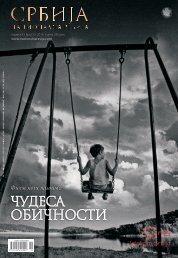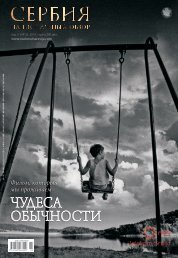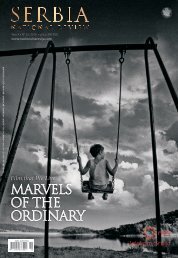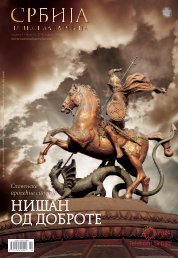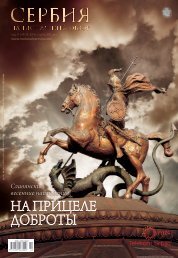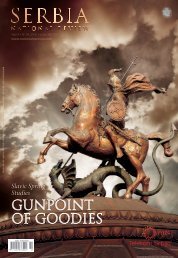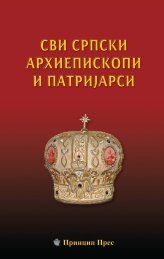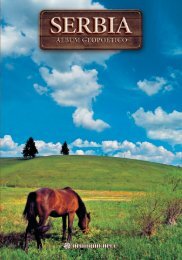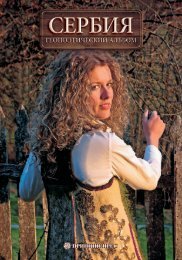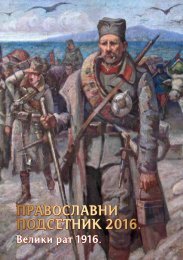Monografija - prvo izdanje - niska rezolucija
You also want an ePaper? Increase the reach of your titles
YUMPU automatically turns print PDFs into web optimized ePapers that Google loves.
Krstić was a significant phenomenon in the development<br />
of Serbian painting for many reasons. His views and understanding<br />
of the sacral were quite revolutionary for Serbian a cultural<br />
milieu that was quite conservative at that time. It seems that<br />
for a small number of painted iconostases in his whole career<br />
Krstić owed gratitude to the most learned man in Serbia at the<br />
time, Mihalio Valtrović. Except the burned iconostasis from the<br />
Cathedral Church, Niš, Krstić’s most highly appreciated work in<br />
this artistic field was iconostasis in the Serbian church in Čurug<br />
(35 kilometres northeast from Novi Sad), which at the same time<br />
represented the victory of Krstić-Valtrović’s ideas of “Orthodoxy<br />
in contemporary church painting”. In icons from Čurug, the artist<br />
fully demonstrated his fundamental intention to improve the<br />
idea of our old painters of medieval frescos and adapt it to modern<br />
times and his own artistic style. Residents of Čurug have all<br />
rights to be proud of the legacy Đorđe Krstić left behind.<br />
Uroš Predić and Paja Jovanović from Banat weren’t as extraordinary<br />
as Krstić, but still they were outstanding painters of<br />
Realism and great masters in the art of painting. Both of them<br />
obtained scholarships from Matica srpska and until the end of<br />
their lives they never forgot their hometowns, Predić his native<br />
Orlovat and Paja his Vršac. Thus, a traveller who visits the village<br />
of Orlovat in Banat mustn’t resist to see the iconostasis in the<br />
Serbian church that Predić painted and donated to the church authorities<br />
in Orlovat, which replaced an old and quite damaged one.<br />
Predić also painted iconostases in other places in Vojvodina such<br />
as Bečej, Pančevo, Perlez, then in the chapel in the Archbishop’s<br />
Palace in Sremski Karlovci as well as in the monastery of Grgeteg<br />
on Fruška Gora. If one adds to this an endless gallery of portraits<br />
he painted for numerous patrons in Vojvodina, it becomes necessary<br />
to describe Predić not only as a productive and sensible artist<br />
but also as an outstanding chronicler of people and events at the<br />
end of the 19 th and in the first half of the 20 th century.<br />
On a fictional journey through Vojvodina, the same traveller<br />
who saw the iconostasis in Orlovat should proceed to Vršac in<br />
Banat. In this town of long and rich cultural tradition one would<br />
Сава Текелија,<br />
оснивач Матице српске<br />
Sava Tekelija,<br />
founder of Matica srpska<br />
264<br />
certainly be attracted to “The Vršac’s Triptych” painted by Paja<br />
Jovanović and exhibited in the “Pharmacy on the Stairs”. This<br />
painting represented the artist and Serbian Pavilion at the Millennium<br />
Exhibition in Budapest in 1896. However another of<br />
Jovanović’s painting, which is perhaps today considered the most<br />
famous painting in the Serbian era of modern art, is Migrations



